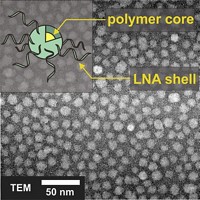Advertisement
Grab your lab coat. Let's get started
Welcome!
Welcome!
Create an account below to get 6 C&EN articles per month, receive newsletters and more - all free.
It seems this is your first time logging in online. Please enter the following information to continue.
As an ACS member you automatically get access to this site. All we need is few more details to create your reading experience.
Not you? Sign in with a different account.
Not you? Sign in with a different account.
ERROR 1
ERROR 1
ERROR 2
ERROR 2
ERROR 2
ERROR 2
ERROR 2
Password and Confirm password must match.
If you have an ACS member number, please enter it here so we can link this account to your membership. (optional)
ERROR 2
ACS values your privacy. By submitting your information, you are gaining access to C&EN and subscribing to our weekly newsletter. We use the information you provide to make your reading experience better, and we will never sell your data to third party members.
Biological Chemistry
Graphene Ferries DNA
Atom-thick carbon sheets shepherd oligonucleotides into cells
by Carmen Drahl
April 5, 2010
| A version of this story appeared in
Volume 88, Issue 14
Add DNA delivery to the long list of applications for the versatile carbon material graphene. A team led by Huang-Hao Yang of Fuzhou University, in China, has delivered short stretches of DNA into cells with the help of tiny sheets of nanoscale graphene oxide (Chem. Comm., DOI: 10.1039/b926893f). Relatively few nanomaterials have been explored for delivering DNA to cells, an area dominated by cationic polymers and lipids. Yang and coworkers employed graphene to transport a molecular beacon: a loop of DNA with a fluorescent dye and a quencher on opposite ends. In its quenched loop shape, the beacon interacts with the graphene and has low fluorescence. Once inside cells, the beacon intertwines with its complementary DNA target, releasing it from its graphene ferry and restoring its reddish glow. The graphene also protects its nucleotide cargo from destruction by DNA-cleaving enzymes. Preliminary tests suggest that the graphene isn’t toxic to the cells. Next, the team plans to deliver potentially therapeutic nucleotides such as siRNA to cells.







Join the conversation
Contact the reporter
Submit a Letter to the Editor for publication
Engage with us on Twitter